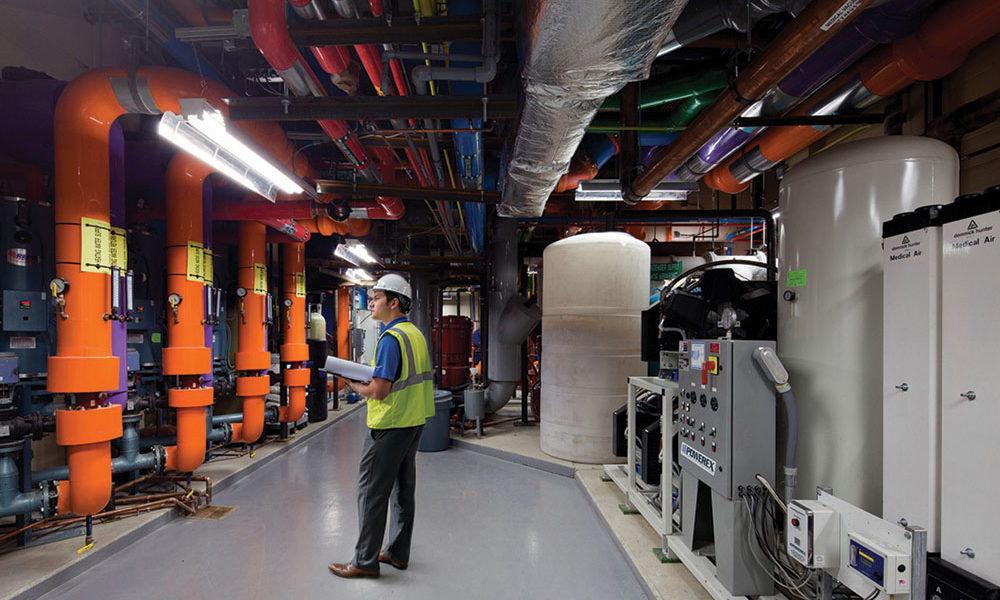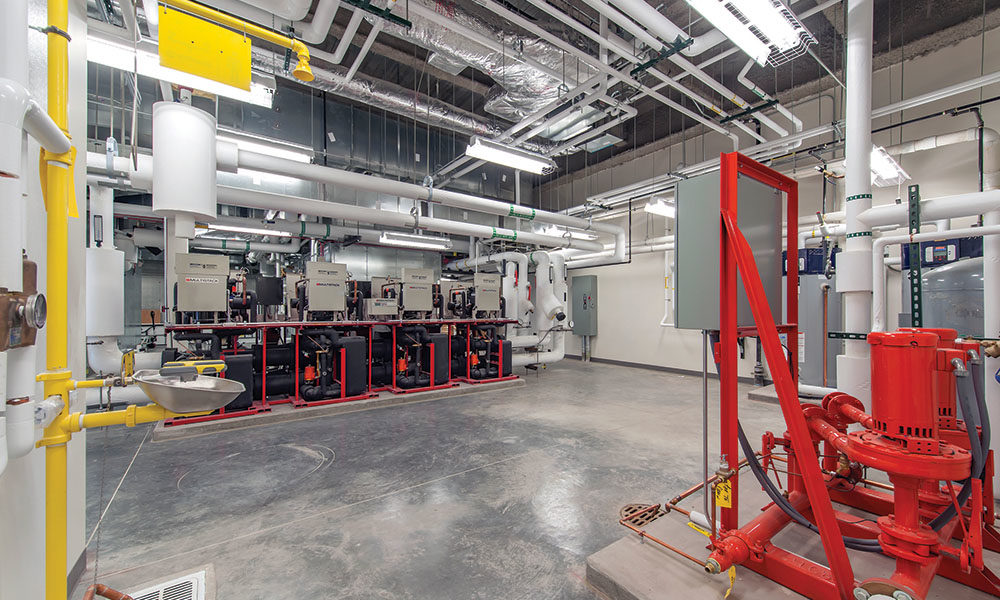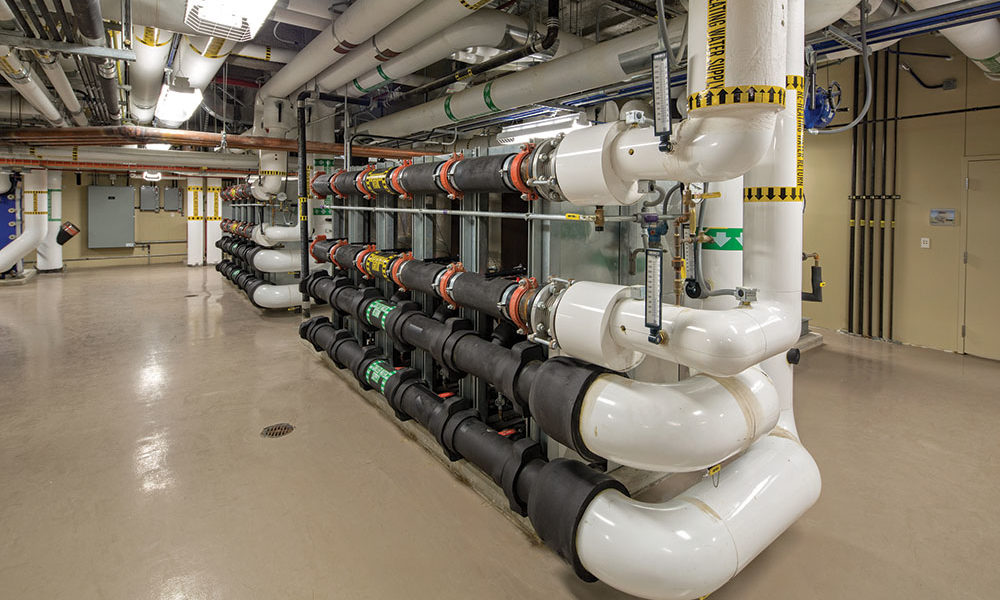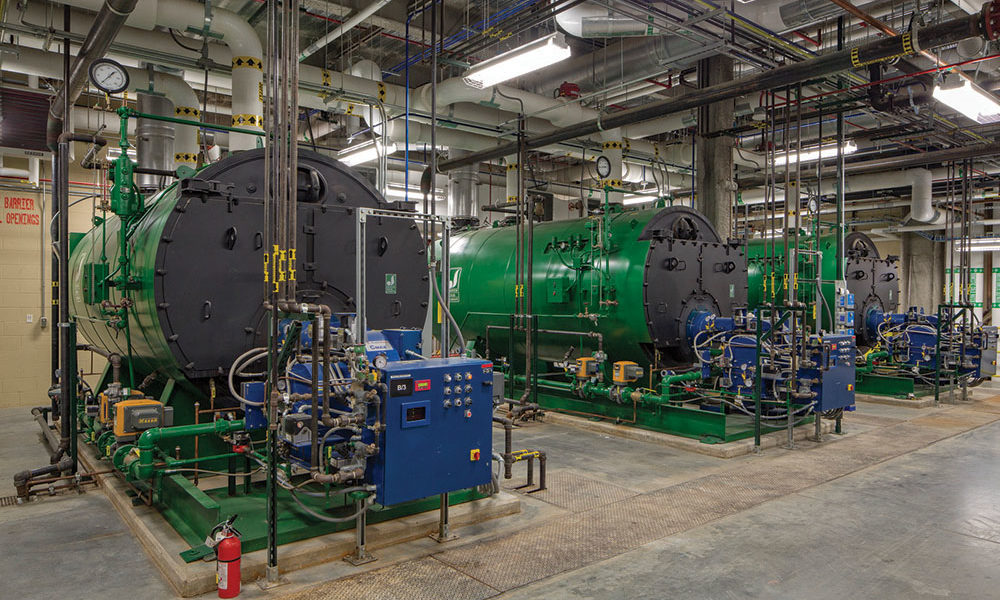If a building is designed to LEED energy principles, but isn’t operated that way, is it still sustainable?
By Dustin S. Brand, Denise L. Allacher & Nicholas A. Lassek
Schrödinger’s cat is a famous thought experiment that asks scientists to imagine a cat in a box. Also in the box is a bottle of poison rigged to shatter when a radioactive element reaches a certain level of decay. Without opening the box, it’s impossible to know whether the cat is alive or dead. In quantum mechanics, this is used to conceive of a scenario where the cat is somehow both alive AND dead.
Architects and engineers designing sustainable healthcare projects are put in a similar position of uncertainty when turning over a building to the owner. Despite carefully designing a hospital to operate at peak efficiency, we sometimes never find out if it does. A building is only as sustainable as its day-to-day operation. If it’s not run in a manner consistent with its design intent, it’s somehow both sustainable and not. The following tips are for generating engagement and quality input from maintenance staff at every stage of design, and for creating sustainable designs that are sustainable in real life.
1. Start with integrative design
According to the Green Building Alliance, 70 percent of the decisions associated with environmental impacts are made within the first 10 percent of the design process. Once these decisions are made, it becomes very expensive to change them. Most of the time, they end up not being addressed.
In a traditional process, design progresses from architect to engineer, to interior designer, to builder and finally is handed off to maintenance staff. With this type of process, input from the existing facility maintenance staff that could have been instrumental to the sustainable operation of the building is lost. Synergies between system design and operation are ignored, and the overall design is less efficient than it could have been.
On the flip side, an integrative design process gives all stakeholders a seat at the table from the very beginning. Although this process adds some extra work in the initial phases of the project, it results in a more finely coordinated design, and prevents more costly changes later.
2. Involve line-level maintenance staff early in the design
For maintenance staff, input given at the early stages has a big impact on how the building comes together, and how it will be maintained. If the maintenance requirements of mechanical systems are ignored early on, you may end up specifying systems that the staff doesn’t have either the knowledge or time to properly maintain. Typical healthcare facilities have a multi-person maintenance staff tasked with keeping systems maintained and running while also ensuring patient care, patient experience and safety is maintained. These patient-focused tasks can be so time-consuming that other tasks end up ignored.
One area where direct staff input matters most is in the building automation system. There is a wide range of variables when setting up a BAS, and every hospital’s maintenance staff uses theirs in a different way. Depending on the experience level of staff, a complex BAS can be overwhelming. They may view the system’s alarms as nuisances, and simply develop workarounds rather than using the information to fine-tune the system.
It all comes down to making the design intuitive to the intended user. A mechanical system that staff finds easy to use, control and maintain is always going to be more efficient. With their input, you can find the sweet spot, where design intent meets the staff’s ability to sustainably operate it.
3. Be clear about maintenance hazards
Some sustainable systems, like frictionless magnetic bearing chillers, are easier to maintain, while others add a lot more work. Designers should never assume building staff already knows the added burden of maintenance of a new system, or that they have the staffing power to keep it functioning. Instead, be upfront about maintenance issues, read through operation manuals with the staff and be proactive about asking and answering tough questions.
Our design team was recently contacted by a rural hospital that ran into a catastrophic problem when its high-efficiency, condensing, low-mass boiler, which had been specified by a previous design firm, failed seemingly out of nowhere. The boiler was only seven years old. While the boiler had great energy-use stats, it had been specified without having a conversation about the maintenance and water-quality requirements.
In discussions, we discovered the maintenance routine, which would have required quarterly shutdowns of the boiler to clean debris buildup and extensive, continuous water purification had not been explicitly discussed. If it had, the designer would have learned that the hospital was not staffed to do this maintenance. Being a 24/7 institution, it would have been very difficult to time shutdowns correctly and guarantee pristine feed water at all times. Situations like this can be avoided by having critical maintenance discussions early.
4. Train, train, train
A key component in the handover of a sustainable system is mechanical-system commissioning. This ensures various building systems are coordinated properly, and are operating in a manner consistent with the design intent.
Although commissioning is a standard part of sustainable design, not every maintenance staff views it as critical to the successful operation of the building. In reality, the commissioning period is an outstanding opportunity for staff to gain hands-on understanding of how the building is intended to operate. The more invested the maintenance staff is in the process, the more hands-on knowledge they gain and the better they’ll understand the system.
The building systems might be perfectly calibrated by commissioning, but if on day two the maintenance staff doesn’t have a practical, in-depth knowledge of how it operates, the energy savings and environmental benefits can quickly vanish.
Keep commissioning
Just as natural ecosystems change over time, a hospital’s complex network of building systems can fail over time. Small alterations to how the building operates, real-world conditions and aging of equipment can add up to a system that is no longer operating sustainably.
The remedy is recommissioning, which is just like commissioning, except it happens once the building has been in operation for a while. It’s a good reality check for an almost-new building, and a critical part of a hospital’s sustainability performance throughout its lifecycle.
The U.S. government’s Energy Star program suggests recommissioning a building every 3-5 years to maintain peak performance. Hospital systems that make a habit of recommissioning their buildings enjoy marked savings from energy performance over time.
If a hospital is designed to LEED standards, it’s a sustainable design, but may not be a sustainable building. True sustainability is active, starting with a design process that accounts for the real-world needs of maintenance staff, and continuing throughout the life of the building. This level of commitment is necessary from everyone, including the design team of architects, engineers, interior designers and builders, the owner and every staff person who is in there every day, turning the screws. Only if all of those people work together will a sustainable design truly reach its potential.
Author: Dustin S. Brand, Denise L. Allacher & Nicholas A. Lassek
Dustin S. Brand, P.E., LEED AP, is a mechanical project engineer at Leo A Daly. Denise L. Allacher, P.E., CBCP, LEED AP, is a senior mechanical project engineer and leads Leo A Daly’s commissioning practice. Nicholas A. Lassek is a mechanical engineer in training at Leo A Daly.
Posted December 7, 2018
More Articles:
- Coverings 2024
Apr 22, 2024 – Apr 25, 2024 - Hospital, Outpatient Facilities & Medical Office Buildings Summit
Apr 25, 2024 – Apr 25, 2024 - CxA Workshop & Exam
Apr 29, 2024 – Apr 30, 2024 - EMP Seminar & Exam at CxEnergy 2024
Apr 29, 2024 – Apr 30, 2024 - CxEnergy
Apr 29, 2024 – May 2, 2024 - PHCC West 2024
Apr 29, 2024 – May 2, 2024 - Lean in Design Forum 2024
May 1, 2024 – May 2, 2024














